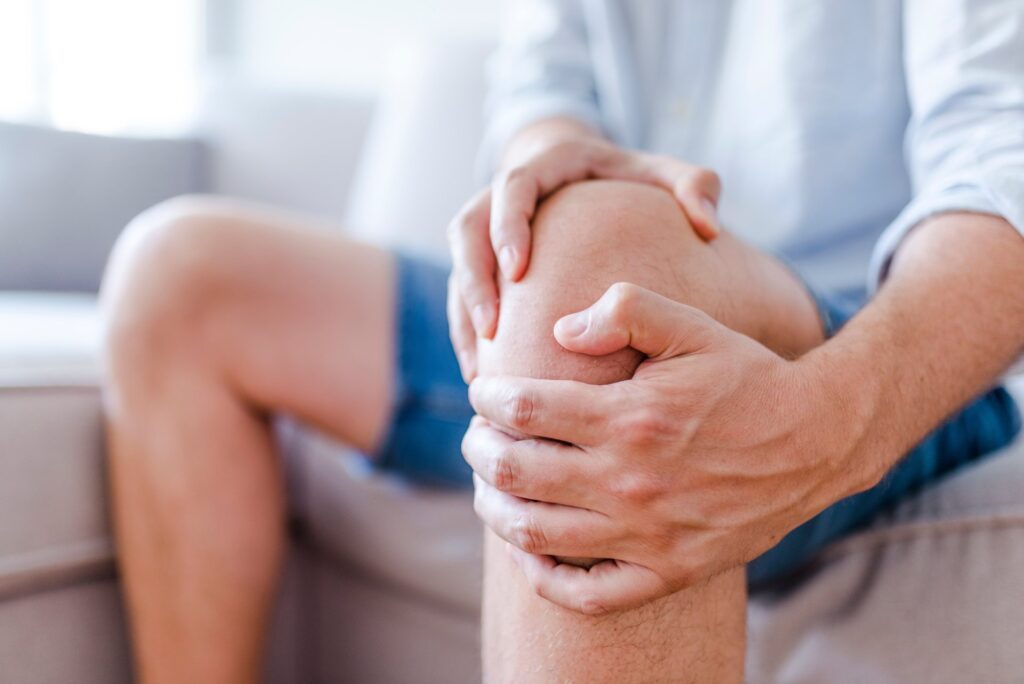Let’s get real for a moment: if you’ve ever been told that running or staying active might “wear out your joints,” you’re not alone. It’s a message that’s been floating around for decades—and honestly, it can make people scared to move at all, especially if they already have joint aches or stiffness.
But here’s what I want you to know, both as someone who studies this and as someone who cares deeply about your health: the research tells a different story.
Runners and Arthritis—What the Research Really Shows
Over the years, we’ve gathered a lot of data comparing people who run regularly with those who don’t—and what’s been uncovered is surprising in the best way.
In one of the largest studies to date (over 114,000 people), researchers found that recreational runners had the lowest rate of osteoarthritis in the knees and hips. Not just lower than elite athletes—but lower than people who didn’t run at all1.
- Recreational runners had about a 3.5% prevalence of OA
- Sedentary people were closer to 10%
- Elite and competitive runners? Around 13%1
So the folks who got out for a jog a few times a week had less arthritis than those who stayed on the sidelines. That’s a powerful message.
Where Risk Starts to Rise
Now, before we crown running as a magic cure-all, let’s talk about the full picture. The research shows a kind of U-shape when it comes to OA risk:
- Not moving much = higher risk
- Moderate, consistent movement = lowest risk
- Extremely high training levels, like elite or ultramarathon running = higher risk again, but mostly if injuries are involved1,2
So it’s not about doing more exercise to stay safe—it’s about doing the right amount that your body can recover from and sustain over time.
What About High Mileage?
You might be wondering if there’s a threshold where running becomes “too much.” Some folks run over 48 kilometers (or 30 miles) a week—and the studies looked at them too. The results? No significant increase in knee osteoarthritis compared to people running just 8 kilometers a week3.
Even veteran marathoners—some who’ve completed over 70 races—had lower rates of arthritis than non-runners of the same age4. And their arthritis rates weren’t tied to how many years they’d been running, how far they went, or how many races they finished.
What’s Really Causing the Problem?
Here’s the catch with elite athletes and OA: the higher risk usually isn’t just from running a lot—it’s from injuries. Torn ligaments, cartilage damage, poor recovery, or pushing through pain over and over again can add up5. That’s where the risk shows up.
So for most people who stay active in a way that respects their body’s limits? The risk of developing OA is not higher—and research suggests it to actually be lower.
And Inactivity? That’s a Risk Too.
Let’s flip the script. A lot of people avoid exercise to protect their joints—but sitting too much, losing muscle strength, and carrying extra weight can increase your risk of OA6.
When you’re inactive:
- Your muscles don’t support your joints as well
- Your joints get less nourishment from movement
- Your overall inflammation and metabolic load can increase
And the research backs that up: sedentary folks consistently show higher rates of osteoarthritis than people who stay active—even moderately1,6,7.
So What’s the Sweet Spot?
If you want to lower your risk of OA, here’s what the science supports:
- Move consistently, not excessively
- Choose joint-friendly activities: walking, biking, swimming, gentle running, strength training
- Stay strong, maintain a healthy weight, and give your joints the movement they need
And above all—don’t let fear of OA keep you from getting active.
Final Thoughts from Someone Who Cares
I’m not just sharing data here—I’ve walked this road with many people who were hesitant, worried, or in pain. If that’s you, you’re not alone. The goal isn’t to run marathons (unless that brings you joy). The goal is to move in a way that supports your body and your life.
Movement is not the enemy—it’s part of the solution. And yes, it can be done safely.
Not Sure Where to Start?
If you’re worried about your joints or concerned about developing osteoarthritis, this is exactly where our team at Twin Oaks comes in. Our exercise scientists specialize in helping people like you ease into movement safely—especially if you’ve been inactive or anxious about getting started.
Book a consult today to chat with a Twin Oaks exercise scientist. Let’s talk about your goals, your concerns, and how we can help you move forward—literally.
We’re here to help you protect your joints, build confidence, and feel better in your body.
For Part 2, we’ll dive into the best kinds of movement for those who already have osteoarthritis—and how to make exercise feel safer and more accessible, even if you’re starting small.
Footnotes
- Alentorn-Geli E, et al. The association of recreational and competitive running with hip and knee osteoarthritis: a systematic review and meta-analysis. J Orthop Sports Phys Ther. 2017;47(6):373–390.
- Kettunen JA, et al. Lower-limb function among former elite male athletes. Am J Sports Med. 2001;29(1):2–8.
- Timmins KA, et al. Running and knee osteoarthritis: a systematic review and meta-analysis. Am J Sports Med. 2017;45(6):1447–1457.
- Chakravarty EF, et al. Long distance running and knee osteoarthritis. Am J Prev Med. 2008;35(2):133–138.
- Thelin N, et al. Knee injuries account for the sports-related increased risk of knee osteoarthritis. Scand J Med Sci Sports. 2006;16(5):329–333.
- Blagojevic M, et al. Risk factors for onset of osteoarthritis of the knee in older adults: a systematic review and meta-analysis. Osteoarthritis Cartilage. 2010;18(1):24–33.
- Li X, et al. Causal effect of physical activity and sedentary behaviors on the risk of osteoarthritis: a Mendelian randomization study. Sci Rep. 2023;13:19410.


